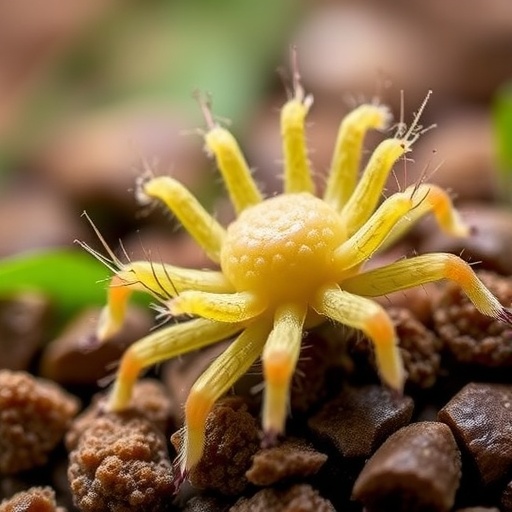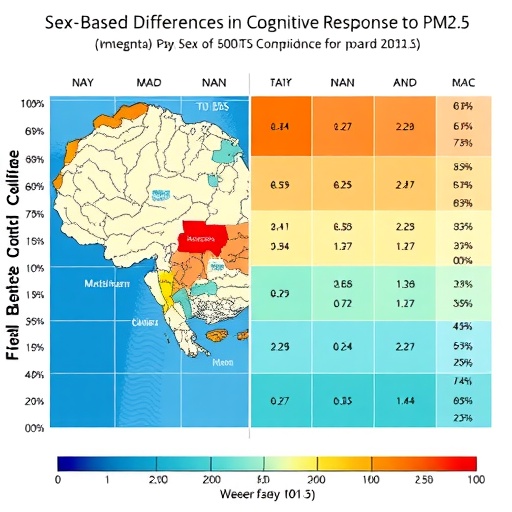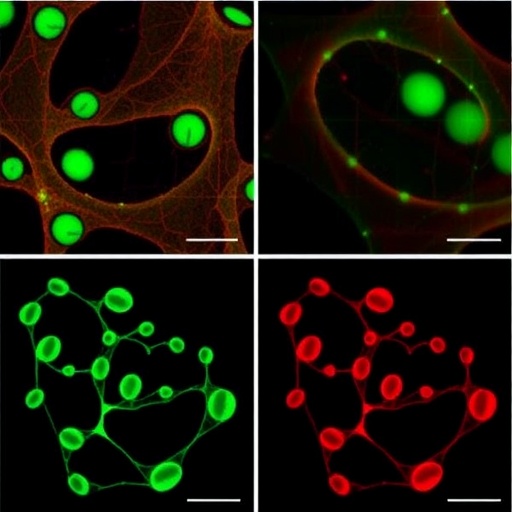In the realm of natural product research, the intricate world of wild plants has drawn significant attention, particularly due to their potential as sources of novel compounds with therapeutic qualities. This has led to a renewed interest in unexplored species, such as the wild Commicarpus, where the focus has turned to its two prominent variants: Commicarpus grandiflorus and Commicarpus plumbagineus. The profound significance of these species lies not only in their ecological roles but also in the wealth of biochemical pathways and compounds that they may offer, establishing them as promising candidates for further scientific exploration.
Researchers have uncovered compelling data surrounding the chemical profiling of these plants, revealing a complex array of secondary metabolites. These compounds are crucial as they play a vital role in the plants’ interactions with their environment, providing insight into their ecological functions. The analysis has demonstrated that both C. grandiflorus and C. plumbagineus are rich in flavonoids, terpenoids, and alkaloids, which are associated with various biological activities. Flavonoids, for instance, have been linked to anti-inflammatory and antioxidant properties, suggesting that these plants may confer similar benefits.
The study of C. grandiflorus revealed a particularly rich endowment of flavonoids. These compounds are not only pivotal in plant defense mechanisms but are also essential in plant-human interactions, potentially offering health benefits when consumed. The presence of phenolic compounds further strengthens the argument for the therapeutic applications of these plants. Given the increasing integration of herbal medicine into mainstream healthcare, understanding the specific biochemical makeup of these species is critical.
Similarly, C. plumbagineus has showcased an impressive profile of terpenoids, which are renowned for their diverse biological activities, including antimicrobial and anti-cancer properties. The biosynthetic pathways that lead to the formation of these compounds can be complex, yet the exploratory findings emphasize the importance of continuing to dissect these pathways in order to isolate and identify which specific compounds exhibit the most significant health benefits.
Additionally, the biological effects observed from C. grandiflorus and C. plumbagineus do not merely sway towards positive health outcomes. The multidirectional nature of these effects suggests a complex interplay between various biological systems in the body. Initial investigations have indicated that extracts from these plants may boost immune function, promote wound healing, and possess analgesic properties, which aligns with traditional medicinal uses recorded over centuries.
Investigating the safety profile of dietary and therapeutic agents derived from plants is essential, particularly when exploring their use in human health. In this case, both C. grandiflorus and C. plumbagineus have shown a promising safety margin based on preliminary toxicological evaluations. This information paves the way for potential clinical applications and the development of herbal supplements that could tap into these beneficial properties without posing significant health risks to consumers.
Furthermore, the search for sustainable alternatives to synthetic pharmaceuticals in today’s healthcare landscape has made these plants all the more appealing. As the global population continues to favor natural remedies over chemical counterparts, building awareness about the therapeutic potential of Commicarpus species could catalyze interest among both the medical community and the general public alike.
The role of ethnopharmacology in discovering new therapeutic agents highlights the importance of traditional knowledge in guiding scientific inquiry. Local communities’ long-standing practices, which have been intertwined with the use of C. grandiflorus and C. plumbagineus, resonate strongly within the framework of this study. These plants have been utilized for generations, often relied upon for their purported health benefits, which echoes the insights gathered from modern scientific research.
In juxtaposition to their healing properties, ongoing studies are emphasizing the environmental significance of C. grandiflorus and C. plumbagineus. These species contribute to ecosystem stability and biodiversity. By promoting further research into their cultivation and conservation, scientists can create a dual impact: preserving the plants themselves while also unlocking their vast pharmacological potential.
To capitalize on the findings of this research requires collaboration across various scientific domains. The synergy between botanists, pharmacologists, and ecologists will be invaluable to uncover the full extent of the benefits offered by Commicarpus species. Future studies should prioritize not only the isolation of active compounds but also the exploration of their synergistic effects within combinations or formulations, providing a holistic approach to their application.
In conclusion, the examination of Commicarpus grandiflorus and Commicarpus plumbagineus vibrant chemical profiles and their multifaceted biological effects reveals much promise. As a new frontier in medicinal plant research, these species might represent one of the untapped gold mines of health-promoting insights, awaiting further exploration and validation. The amalgamation of traditional knowledge, modern science, and sustainable practices could indeed herald a new era for these remarkable plants in contemporary medicine.
As we move forward, the commitment to unraveling the complexities of these plants will prove essential, not just for academic purposes, but for the profound impact that such research can have on public health. The journey from understanding the chemistry and biology of C. grandiflorus and C. plumbagineus to tangible applications in medical and therapeutic settings may very well become a pivotal chapter in the story of natural product chemistry.
By shedding light on the vast potential of these wild species, we are not only cultivating appreciation for biodiversity but also paving pathways for innovative development in complementary and alternative therapies. With continued investigation, the legacy of Commicarpus may one day sit at the forefront of herbal medicine, illustrating how nature’s gifts can seamlessly merge with science to foster profound health benefits.
Subject of Research: Chemical profiling and biological effects of Commicarpus grandiflorus and Commicarpus plumbagineus.
Article Title: Chemical profiling and multidirectional biological effects of the aerial parts of two wild Commicarpus species; C. grandiflorus and C. plumbagineus.
Article References: Mekky, R.H., El-Desoky, A.H., El-Shiekh, R.A. et al. Chemical profiling and multidirectional biological effects of the aerial parts of two wild Commicarpus species; C. grandiflorus and C. plumbagineus. BMC Complement Med Ther 25, 369 (2025). https://doi.org/10.1186/s12906-025-05128-x
Image Credits: AI Generated
DOI:
Keywords: Commicarpus, chemical profiling, biological effects, ethnopharmacology, natural products, flavonoids, terpenoids, herbal medicine.
Tags: anti-inflammatory plant metabolitesantioxidant properties of flavonoidsCommicarpus chemical profilingCommicarpus grandiflorus propertiesCommicarpus plumbagineus compoundsecological roles of Commicarpusflavonoids and health benefitsnatural product researchnovel compounds from unexplored speciessecondary metabolites in plantsterpenoids and alkaloids in plantstherapeutic compounds in wild plants





